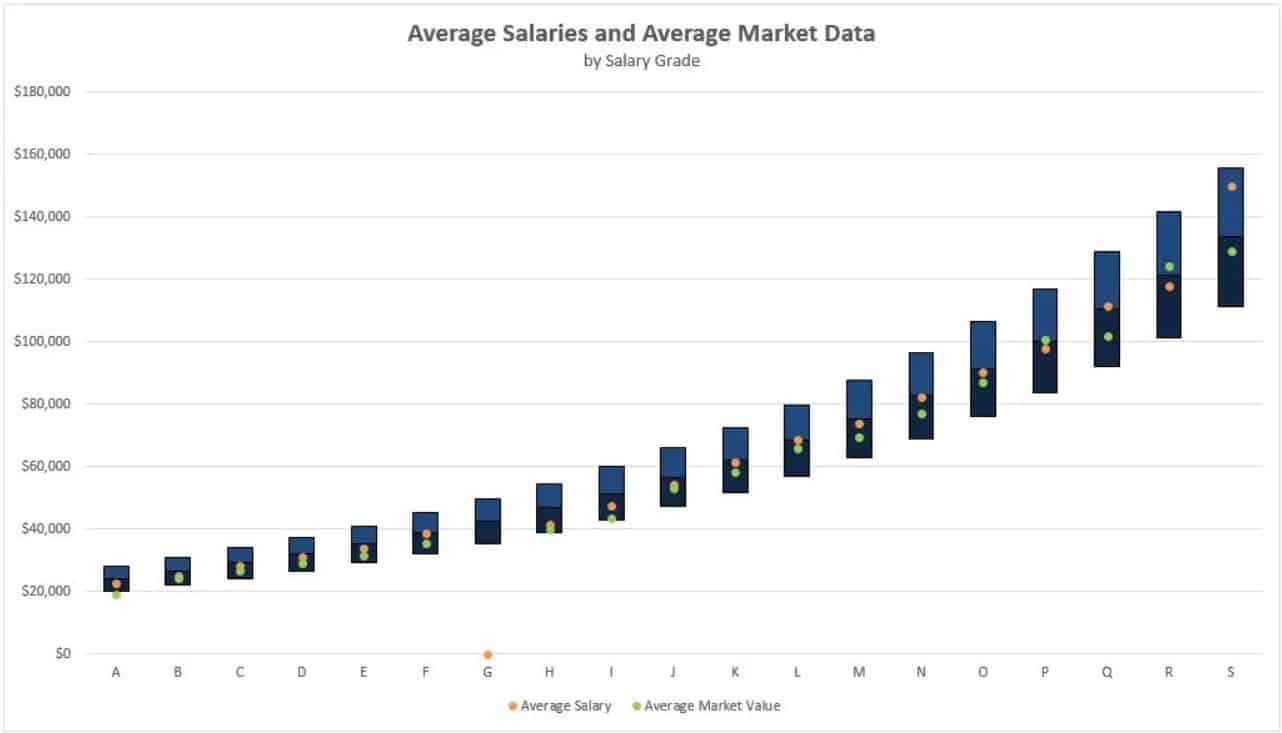The Advantages of Salary Grades
As market data becomes more prevalent and more easily accessed, more robust, and more commonplace, there has been a shift away from point-based systems and there has been a shift towards strictly market-based approaches where each job has a compensation target, irrespective of the other roles. While every organization has its unique set of challenges, relying solely on market data is an approach that trades subjectivity and the expertise of the Compensation Practitioner for the imperfect data. Utilizing salary grades, in lieu of compensation targets specific to each job provides greater flexibility in managing compensation while preserving the value that a robust set of market data provides.
Market Data Is Not Perfect
The market data collected is not perfect, and salary grades and salary ranges allow for some flexibility to accommodate the market data. Salary surveys rely on participants to complete and submit their salary surveys annually, but survey participants are not necessarily consistent from one year to the next. As a result, market data for the same job is likely to vary each year not only due to wage growth but also due to participant fluctuations.
In addition to survey participants fluctuating from one year to the next, it is important to remember that salary surveys only represent a sample of the market. The very nature of how data for employer-reported salary surveys are collected restricts participation from smaller organizations. Since most employer-reported salary surveys are completed by Compensation Practitioners for an organization, organizations without Compensation Practitioners may be underrepresented in the market data. In fact, according to a 2018 publication by the US Small Business Administration*, 47.5% of US employees are employed by firms with fewer than 500 employees.
Relying solely on the market data to determine pay rates may be a myopic approach that compromises an organization’s ability to be competitive in the local market. Using salary grades may provide the Compensation Practitioner greater flexibility to determine the salary targets.
Market Data Moves
Few salary surveys actually track their participant cohorts from one year to the next to determine true market movement, and as a result, the participants and sample sets change from one year to the next. While most salary budget surveys for the United States have reported roughly 3.0% salary increases for the past several years, this does not necessarily mean that the salary surveys will show a 3.0% increase in market data.
A recent analysis of one large technology salary survey, with thousands of participants, revealed that h 25% of the survey jobs actually remained the same or DECREASED in value! It is unlikely that the market worth for these jobs has decreased, but rather the sample of participants has changed, bringing the median rates down from the previous year.

Utilizing multiple salary survey sources in conjunction with a salary grade structure with a reasonable midpoint progression reduces the impact of salary survey volatility, year over year.
Internal Equity Is Deprioritized
Pricing jobs purely by the market data associated with them ignore any internal relationships between a group of related, or unrelated jobs. Market data, by job and job level, vary significantly and does not consider the relative worth of one role to another, within the organization. Using market data in conjunction with salary grades that define the salary band for each job can improve an organization’s ability to manage internal equity by providing the Compensation Practitioner the latitude to balance both the market value as well as the internal equity of the role.
Internal equity is especially important when considering full job families/sub-families and career pathing opportunities. Reviewing only the market data for a singular role, rather than the potential roles within the job family may also create challenges with career progression and providing either meaningful or affordable increases to move employees into the next range. Most surveys see a 15% – 25% differentiation from one level to the next, overall. However, many jobs within the same family may see smaller or larger differences in market data, which may create challenges when promoting employees. By reviewing the market data for all of the roles within a family, and utilizing salary grades, career pathing and internal equity may be improved.
Summary
The role of a Compensation Practitioner is to ensure an organization is able to attract, retain and engage employees through compensation levers, such as base, bonus, and long-term incentives. Successful management of a compensation program requires the application of both the art and science of Compensation, which can be greatly aided with the use of a Salary Grade Structure. By providing the Compensation Practitioner the latitude to exercise discretion and make accommodations for imperfect market data, a salary structure can be developed that both ensures a competitive stance in the market (despite market fluctuations) while maintaining internal equity.
Sources:
*https://www.sba.gov/sites/default/files/advocacy/2018-Small-Business-Profiles-US.pdf



No responses yet